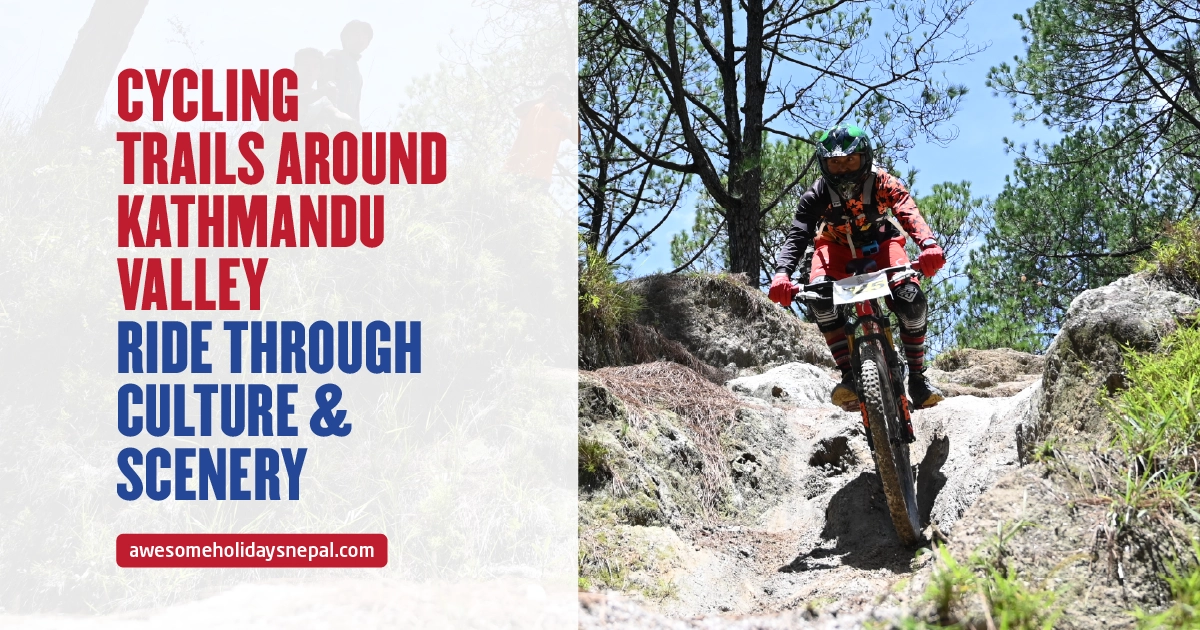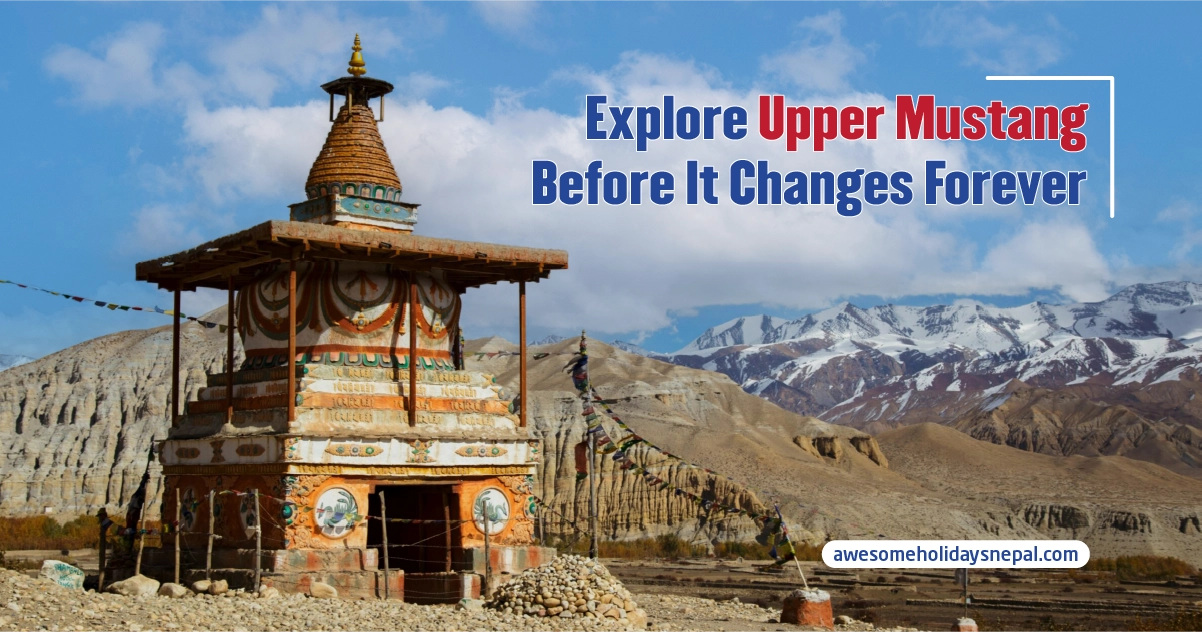Yoga Tourism in Nepal: Origin, Status, and Scope for Future
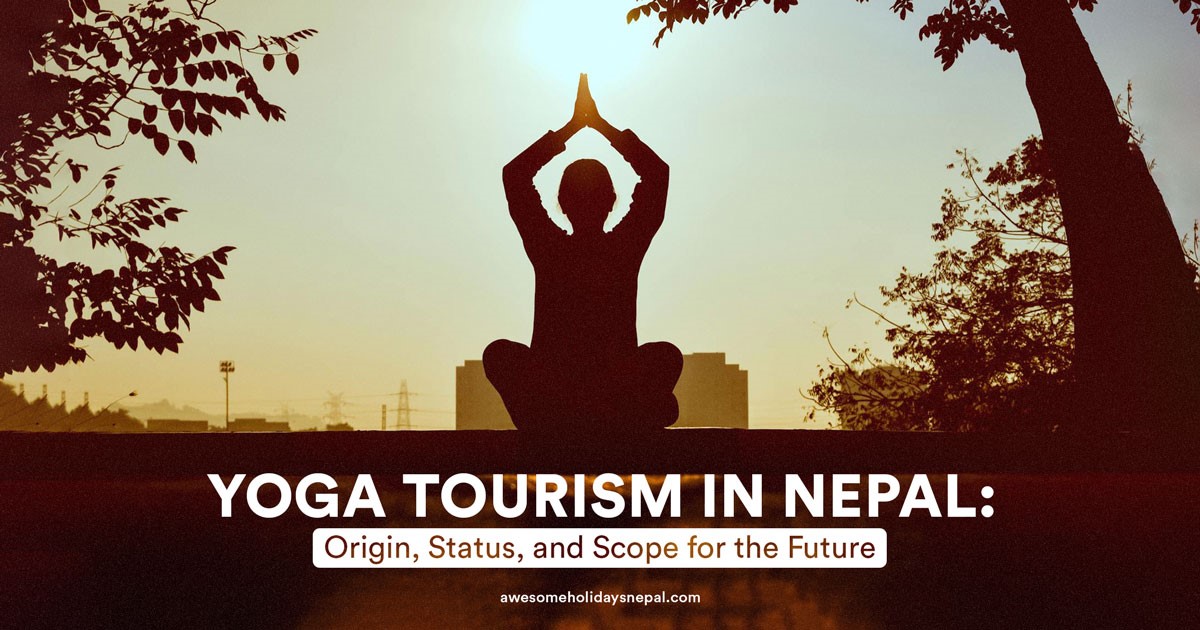
Have you heard about the “Mythical Fountain of Youth? Yes, it does exist, and it’s called yoga. And this is the reason why yoga tourism in Nepal has gained so much popularity.
Yoga is derived from the Sanskrit root “Yuj,” which means to add or join. It is the connection between the body, mind, and spirit. That is how it originated and is practiced in the Himavat Khanda today.
Given the history of its origin, yoga tourism has recently become popular in the country. Packages like yoga retreats, yoga treks, yoga tours, etc., are quite common. Many travel companies and yoga schools organize these trips.
Yoga tourism in Nepal is a rising business. Read the blog to learn more about the origin, status, and future of yoga and yoga tourism in Nepal.
What is Yoga: Everything You Need to Know
As per Patanjali’s yoga sutras, “योग चित्त वृत्ति निरोध”: “Yoga Chitta Vritti Nirodha,” which means that yoga is the practice of quieting the fluctuations of the mind to achieve inner stillness and clarity. Preventing these mental amendments attains self-awareness and realizes their actual capacity.
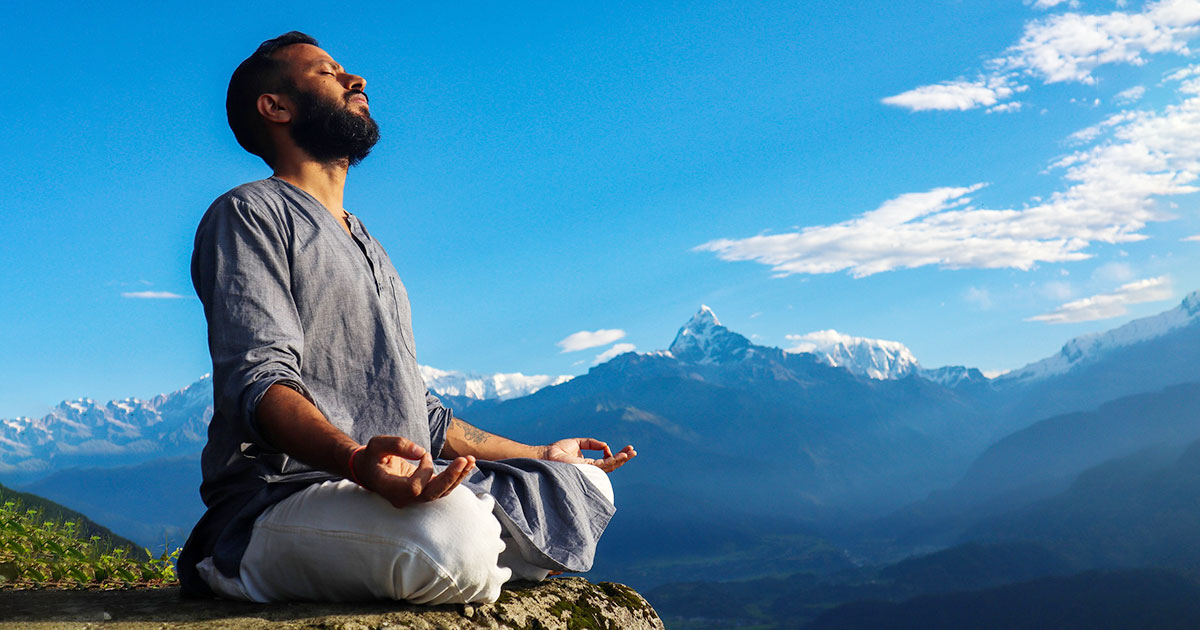
For those seeking inner serenity, yoga helps rejuvenate their mind, body, and soul through various forms. Visitors can experience the magnificence of Nepalese culture and traditions while practicing yoga in the shadow of the breathtaking Himalayan peaks.
Yoga is a spiritual practice that helps one realize the ultimate salvation. It involves omitting unhealthy habits and thoughts and connecting to a healthy, human-friendly environment. Most often, people think that yoga is all about body flexibility. However, postures (ASANAS) are one of the eight limbs of Ashtanga yoga.
Origins of Yoga in the Himalayas of Nepal.
The roots of yoga are deeply tangled with the mystical and cultural antiquity of the Himalayas, particularly in Nepal, often referred to as the cradle of ancient wisdom. Thousands of years ago, the tranquil and grand Himalayan landscapes provided an ideal setting for spiritual pursuers and yogis to research into the mysteries of existence.
The earliest forms of yoga are believed to date back to the Vedic period when ancient sacred texts such as the Upanishads and Vedas documented the practice of meditation, breath control, and self-attention.
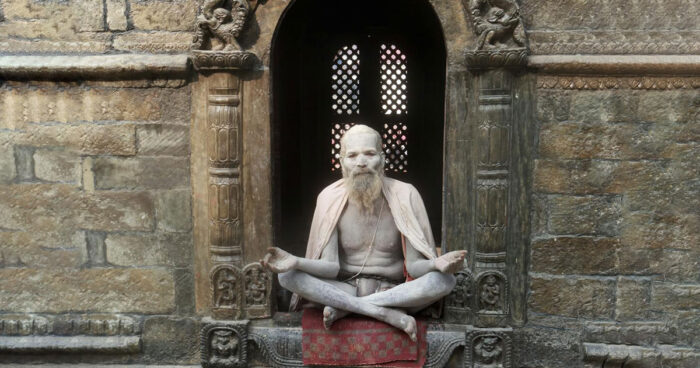
The sacred texts, harmonized with Nepal’s philosophical spiritual energy, cherished the philosophy and practices of yoga, making it a tool for physical, mental, and spiritual growth. Nepal is also home to the birthplace of Siddhartha Gautama Buddha, who emphasized mindfulness and meditation. These practices flourished in harmony with the natural sanctity of the Himalayas, flourished in Tibetan land, and spread throughout the world. Yogis lived in caves, meditating and seeking enlightenment.
Mahasiddha yogi Gorakhshanath, the renowned figure in Hatha yoga and founder of the Nath Sampradaya legend, has it that he meditated in the mystical terrains of Nepal, leaving a legacy. The sacred vibrations of sites like Pashupatinath and Muktinath did much to integrate yoga into everyday life and spiritual practice.
Even today, the Himalayas remain a pilgrimage center for yoga practitioners worldwide, attracting explorers who wish to reconnect with the sources of this deep discipline. The majestic mountains of Nepal are still a source of inspiration, spelling out the timeless message of yoga for humanity in a time when it seems lost in so many distractions: unity and inner peace.
What are the Major Types of Yoga?
Yoga encompasses various styles, each with a unique focus and approach. Hatha Yoga is a gentle introduction to physical postures (asanas) and breath control (pranayama), making it ideal for beginners. Physical yoga or postural yoga is implied as Hatha Yoga. This comprised physical exercise to increase flexibility, strengthen the body, and connect breath with the movement of organs.
On the other hand, there are two major ways to perform yoga practically. Non-physical yoga and physical yoga. Non-physical yoga is a spiritual meditation practice. This sector includes various forms of yoga, like Raja Yoga, Bhakti Yoga, Gyana Yoga, and Karma Yoga.
The other popular forms of yoga are:
- Raja Yoga
- Bhakti Yoga
- Gyana Yoga
- Karma Yoga
- Nada Yoga
- Mantra Yoga
- Tantra Yoga
- Kundalini Yoga
- Ashtanga Yoga
The Eight Limbs of Yoga
The Eight Limbs of Yoga, described in the ancient text Yoga Sutras by Patanjali, offer a comprehensive guide for spiritual, mental, and physical well-being. These eight principles, often referred to as “Ashtanga Yoga”, provide a framework for self-discipline and personal growth, ultimately leading to enlightenment.
- YAMA: self-control, moral disciplines such as non-violence, truthfulness
The first limb, Yama, consists of ethical and moral principles such as self-control, non-violence, truthfulness, and non-stealing, which help cultivate moral conduct.
- NIYAMA: Personal observances like cleanliness and contentment
The second limb, Niyama, focuses on personal observances like cleanliness, contentment, and self-study, promoting internal discipline and self-awareness.
- ASANA: Physical postures or exercises
The third limb, asana, refers to the physical postures practiced in yoga, which strengthen the muscles and prepare them for a higher level of meditation.

- PRANAYAMA: Breathing Techniques
Pranayama, the fourth limb, involves the phenomenon of controlling the breath.
- PRATYAHARA: withdrawal of the Senses
The fifth limb, Pratyahara, encourages isolation from the external world’s distractions and inner concentration.
- DHARANA: Concentration
Dharana, the sixth limb, refers to concentrating the mind, often on a single point or object, to calm the mind.
- DHYANA: Meditation
The seventh limb, Dhyana, is the practice of meditation and contemplation, which deepens concentration and takes humans to a state of inner peace.
- SAMADHI: Enlightenment.
Finally, Samadhi, the eighth limb, represents a state that people can achieve while still bound to the body and unites them with the highest reality of nirvana.
Together, these eight limbs guide individuals toward a balanced, harmonious life, integrating physical practice with spiritual development.
Why Yoga Tourism?
Modern lifestyles, ideal and stagnant work styles, and environmental pollution have degraded people’s quality of life and health. Hence, yoga is crucial for people of all ages, from elderly people to teenagers.
Yoga is not just performing some wow postures; it is more about investigating and discovering the subtle energies of the mind and spirituality. Both breathing practices and meditation can calm and help to concentrate on tasks, bring mental calmness, and reduce anxiety and depression. Yoga postures make the spine flexible. The practitioner remains young for a long time.
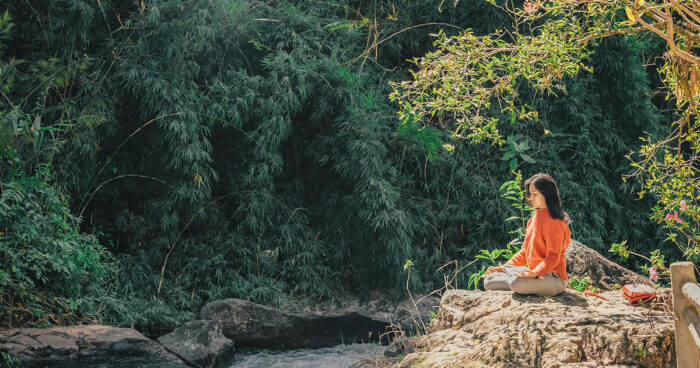
A large number of people who are well aware of yoga’s benefits seek a holiday that also allows one to heal one’s body and mind. Often referred to as “Special Interest Tourism,” wellness tourism is a broad umbrella term under which yoga tourism is studied as a niche market. There are various fields within wellness tourism, such as hydrotherapy, fish spas, herbs, acupuncture, etc. Yoga tourism is studied under the umbrella term.
Various mental disorders are becoming a common problem in a global context. Studies show that yoga has been the best solution for those suffering from psych disorders like depression. Depression is a common mental disorder. It has become an important public health problem. Yoga can also be clinically therapeutic for depression in combination with meditation. Meditation has been proven to help with insomnia, anxiety, stress, irritable bowel syndrome, emotional fluctuation, lonesomeness, heart disease, inflammation, blood pressure, immune response, and many more.
Yoga Tourism in Nepal
An American doctor, Halbert Dunn, developed the concept of ‘wellness’ in 1959. Yoga tourism involves travel with the specific purpose of experiencing a new form of spiritual practice. Nepal promotes yoga tourism by offering specialized yoga and meditation retreat centers. Yoga is gaining popularity due to its intrinsic quality of transforming a person from illness to wellness, mentally and physically.
Yoga tourism is one of the fastest-growing pursuits in the global market. It offers a transformative journey from illness to wellness, blending physical health and spiritual enrichment. Nepal, the birthplace of yoga, nestled in the majestic Himalayas, is an unparalleled destination for this experience.
Nepal preserves ancient spiritual practices like Tantra, Shamanism, Ayurveda, Vipassana, and Singing Bowl Healing, alongside yoga and meditation. Hence, it is known as the “Tantric Land.” The Terai region, celebrated for Lord Buddha and Sita, and the mountain areas, deeply associated with Lord Shiva and Buddhist monasteries, create a rich spiritual landscape. Yoga retreats in Nepal often combine trekking with meditation, offering travelers the serenity of nature and the depth of spiritual exploration.
Nepal’s Commitment to Yoga Tourism
Your experience of practicing yoga is incomplete without doing it in Nepal. Nepal could be a site for those seeking physical well-being and spirituality. Nepal has established itself as a haven for those seeking synchronization and stability in life. Global events like International Yoga Day are celebrated in Nepal with multiple trials, such as retreats and seminars, targeting yoga vacations. International Yoga Day is celebrated on 21st June every year to showcase its commitment to spreading yoga’s message globally.
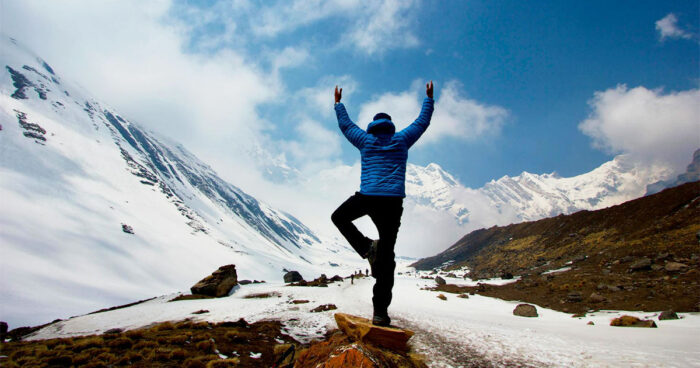
Yoga is practiced daily and on vacations. For some people, practicing yoga constitutes the central theme of their vacation. Yoga in Nepal offers a transformative involvement that boosts physical and mental well-being while developing a deeper connection to ancient spiritual teachings. Collaborative efforts by travel agencies, yoga experts, and retreat organizers ensure a comprehensive and enriching journey, cementing Nepal’s reputation as a sanctuary for wellness and spirituality.
Yoga Tourism after the COVID Pandemic
Yoga tourism in Nepal has increased since the post-pandemic period as travelers worldwide seek spiritual healing and physical rejuvenation. As a yoga expert practicing and teaching in Nepal, I have witnessed the powerful transformation in individuals who arrive seeking peace and self-awareness.
With its stunning landscapes, peaceful atmosphere, and rich cultural heritage, Nepal offers the perfect environment for yoga and meditation. In this blog, let’s explore why Nepal is becoming the top destination for yoga tourism, the benefits of practicing yoga here, and how the tourism landscape is evolving after COVID-19.
Post-COVID Surge: Healing Through Yoga
The COVID-19 pandemic has caused anxiety and stress due to health concerns, economic uncertainty, and social isolation. It has heightened mental health issues, including depression and PTSD, while people deal with loss and disruption to daily life.
On the bright side, it has brought global awareness of mental well-being and the importance of a support system. After the uncertainties of the COVID-19 pandemic, many people sought refuge in yoga to heal their bodies, minds, and spirits. The pandemic disrupted regular routines and brought emotional distress, pushing individuals to prioritize their mental and physical health.
Nepal is known for its peaceful and natural setting, and thus, yoga tourism has increased in the country as people seek a place for introspection, healing, and self-discovery.
Why Yoga Tourism in Nepal?
Naturally peaceful, Nepal’s backdrop of the breathtaking Himalayas preserves an ideal setting for yoga, meditation, and spiritual healing. The serene atmosphere allows practitioners to escape the daily chaos and fully engage in the present moment.
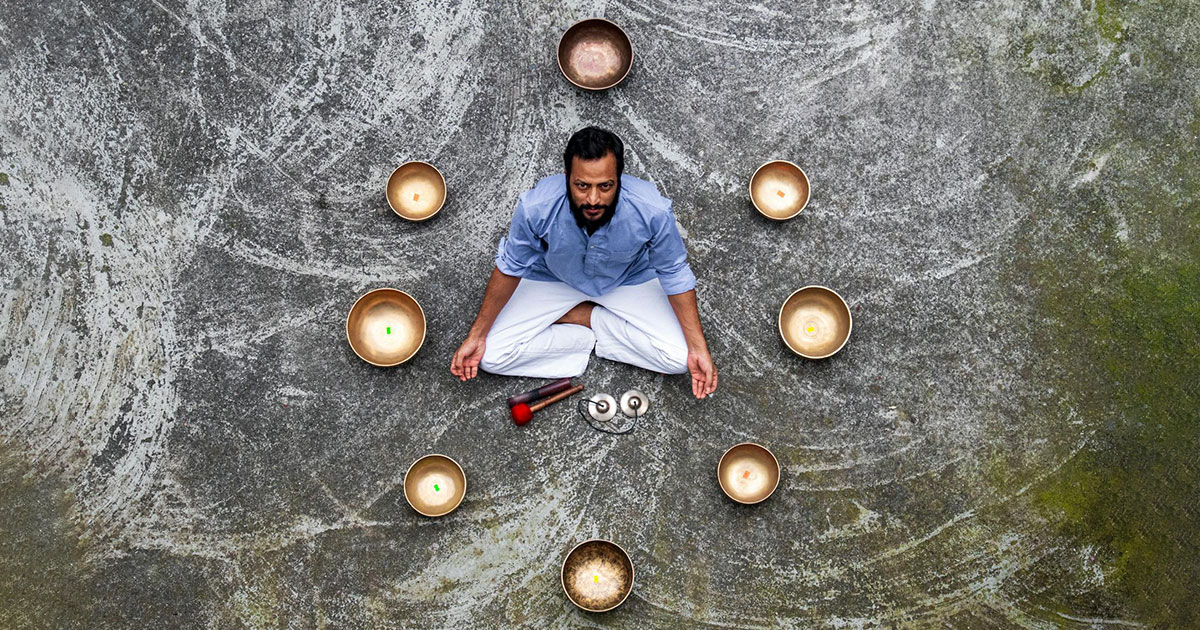
A Cultural and Spiritual Hub
Rich cultural and spiritual heritage characterizes yoga practices in Nepal, ranging from the Vedas to modern hatha yoga. It is even more enriching because of the presence of spiritual leaders and monasteries, which are ideal for exploring one’s spiritual journey.
Expert Teachers and Traditional Knowledge
Nepal is also home to several world-renowned yoga teachers who combine traditional practices with modern wellness approaches. Their teachings, which they genuinely learned over many years in the Himalayas, attract yoga lovers worldwide.
Tips for Traveling to Nepal for Yoga Tourism
Plan for Your Retreat
Plan and make reservations for your mentor during the peak season (October to December and March to May). Research and choose a retreat that aligns with your personal goals and expectations.
Consider Your Accommodation Preferences
From luxurious hotels to eco-friendly guesthouses. Choose a place that makes you feel comfortable, and consider eco-conscious options that reflect the holistic values of yoga.
Know About High Altitude
If you are trekking to higher regions and base camps, take precautions and allow time to acclimate. It’s best to stay hydrated, avoid overexertion, and seek medical advice if you’re unsure about your altitude tolerance.
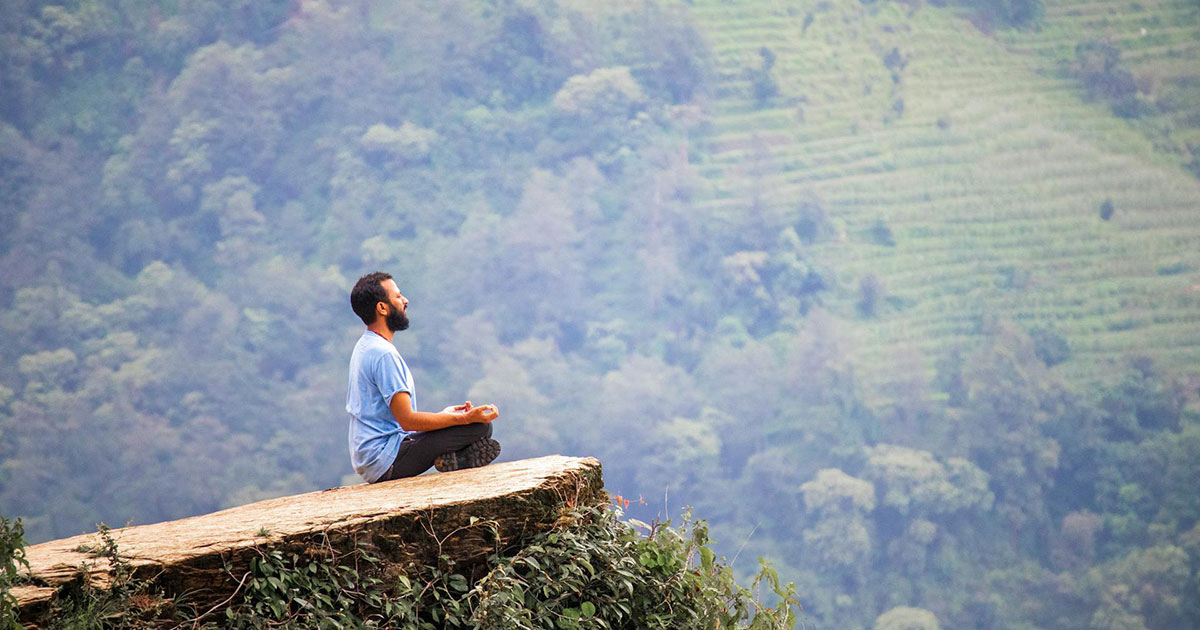
Pack Light
If you are traveling for a yoga retreat, it’s important to pack light. Layer your clothing according to the weather. If you have included trekking in your itinerary, pack warm clothes, durable trekking boots, and other essential gear for trekking.
A Transformative Journey Awaits You
Nepal is undoubtedly one of the world’s most transformative destinations for yoga tourism. With its rich history, stunning landscapes, and profound spiritual energy, the country offers a unique opportunity to deepen your yoga practice and reconnect with your inner self.
As the world continues to heal from the COVID-19 pandemic, yoga tourism in Nepal is thriving. It offers an ideal sanctuary for those seeking balance, peace, and wellness. Come to Nepal and embark on self-discovery, healing, and transformation through yoga.
FAQs
Expand AllIs Nepal good for yoga?
Yes, Nepal is a good place for yoga as it is considered the birthplace of yoga and meditation.
Why is Nepal famous for tourism?
Nepal is famous for its tourism because it offers various tourist activities, including trekking, mountain climbing, paragliding, and religious tourism.
Who is the father of the tourism industry?
Thomas Cook is called the father of modern tourism as he was the first one to establish the first travel agency in the United Kingdom.
Why is yoga important in relation to tourism?
Yoga is important in relation to tourism because people travel to relax, and yoga practices like meditation and breathing exercises help to reduce stress levels, allowing travelers to unwind and rejuvenate.
Who is the father of tourism in Nepal?
Due to his immense contributions to developing and promoting the country’s tourism industry, Karna Shakya is called the father of tourism in Nepal.
Which city is known as yoga capital?
Rishikesh, a city in India, is known as yoga capital. However, yoga is equally famous in Nepal; you can take yoga retreats nationwide.
Related blog posts
Discover a choice of tourist destinations loved by most of our visitors. Whether you're on a jungle safari to spot rare animals or walking through a world heritage site, these well-planned itineraries cover the major highlights of Nepal.



